Tablet Set Basics
Tablet set, ground set, or tombstone set, whichever term you use, the principal is all the same. This type of preservation, restoration, or installation is the easiest one to perform. But many times one of the most common to deal with in a cemetery work situation. Flat tablet markers are one of the oldest styles of grave marker in the U.S. and were most prevalent to the 1840’s. This section below will explain how to safely set one of these stones. You may also visit our section called HARMFUL METHODS…Don’t Repair With, to better understand what not to do in this situation.

By CCUS member Mark Morton of Gravestone Guardians of Ohio
Resetting these tablet style markers is usually necessary because over time they have begun to lean or sink due to ground movement.


Above is a prime example of a small tablet marker sinking straight down into the ground.
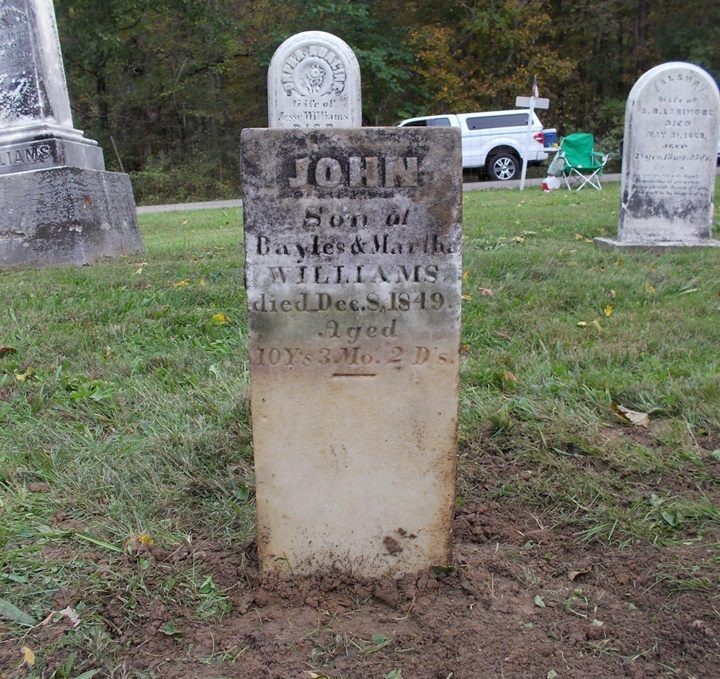
As odd as it may seem for a stone to sink straight down, it is quite common. And this one has had 168 years to do just that. Now that it has been reset, you can really see the degree to which it sank.
The rule of thumb for setting the typical standard tablet is commonly known as the rule of 1/3’s. This is accomplished by measuring the stone’s overall length after it has been excavated and freed from the soil. The goal is to calculate this measurement in 1/3’s and rebury it to the bottom 1/3. Typically this should leave a generous amount of space below the carver’s cut-line below the inscription as in this case.



This early 20th century white marble govt. issue military maker, almost completely disappeared. How clean it may become is yet to be determined. Noticeable scalloping has begun to take place just below the bottom of the carved shield portion of this stone. This is most likely due to a combination of the stones natural makeup and the effects of being below ground for many years.
The Steps for Resetting a Tablet Marker
Care should be taken when freeing the stone. Dig and shovel carefully around the stone ensuring you don’t hit and damage the stone with your tools. It is better to take your time and end up with a bigger hole than you need, than to damage what you are working on.
It is always helpful to have a tarp laid out to pile your dirt on. This keeps your work area neat and allows you to use all the soil that has been removed.
Lifting the stone out of the original hole can be done several different ways. This will depend on the size, weight, and fragility of the stone, and depend on who and how many people are there to help you.

The strap and hoist method is the safest and most supportive for the stone. As seen in the video below. This method will require a 1 ton hoist and a tripod or gantry to attach it to.
Again, this step and the equipment needed will depend on the size and weight of the stone.
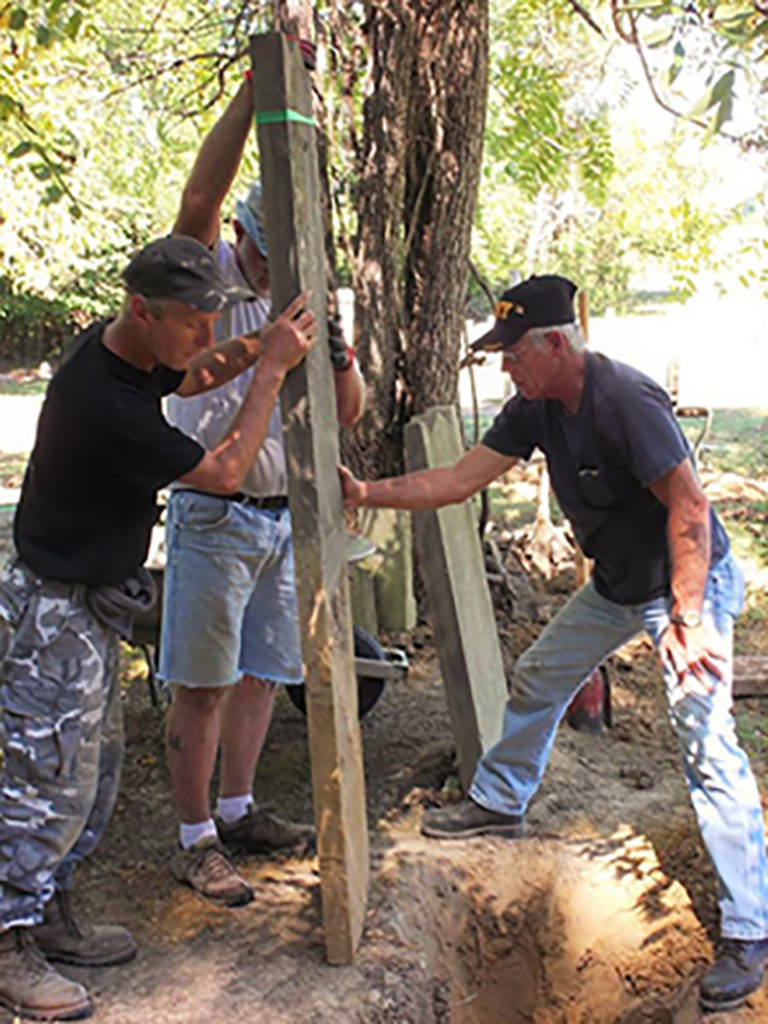

Once you have removed the stone and secured it and your equipment safely, you can begin work on the new hole. You first have to determine the size and depth of this hole. This takes us back to the rule of 1/3’s and measuring the stone to find out what that figure is.
Military markers such as this one, can have a variation to this rule. Military cemeteries have a specific measurement from top center of stone to ground level. This rule is a fairly standard measurement set forth by the VA and closely mimics the rule of 1/3’s.
VA height for upright marble and granite markers as required in national military cemeteries…between 24 and 26 inches from top center crown of marker to ground. The VA sets markers at 26 inches to allow for 2 inches of eventual settling.
You will want to check your desired row alignment and begin to square the hole to accommodate the stone. Dig it an extra 4 inches deep to leave room for a layer of crushed rock or sharp gravel at the bottom.

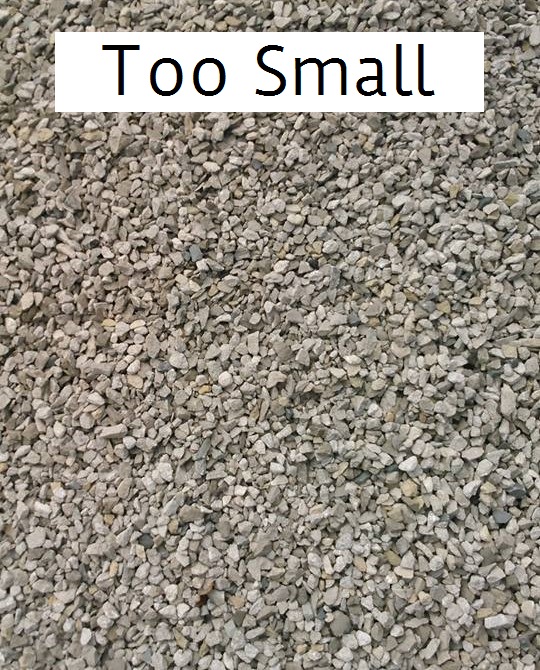
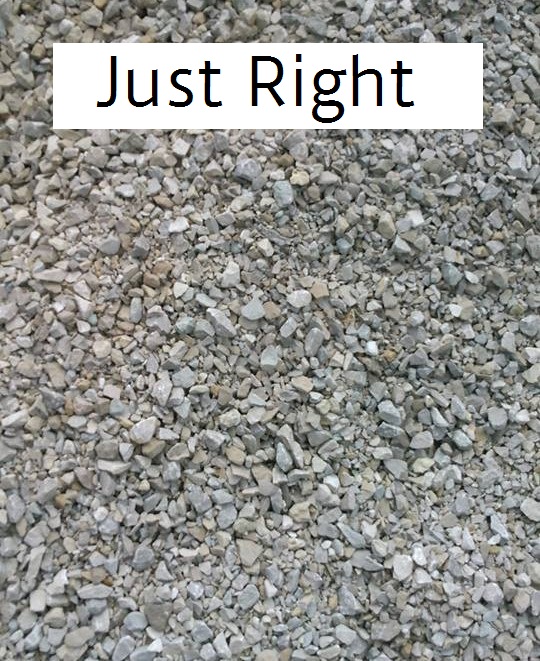
Tablet type tombstones are set with tamped gravel in a square hole. Nothing else is required. Concrete is never used because it will only serve to damage the stone, interrupt natural water flow, and solve nothing.
The type of rock used should be thumb sized and smaller and sharp, not round. Rounded or tumbled gravel or rock doesn’t pack well and may allow the marker to move. There are many terms for different types of gravel. G-57 is a common term across the Midwest for gravel of this size. Slag or crushed limestone is the preferred gravel used by the VA and the preferred type by many preservationists. A load of this type ranges in size from thumb size to pea gravel size. It’s generally cheaper and has great compaction. You can never go wrong with too much gravel.
Tamp the dirt in the bottom of the hole, then add your gravel and tamp it also.

Now you are ready to place the stone in the hole. When this is done you will want to check your desired row alignment and begin to level the stone. A post level is the best tool for this because it will easily allow you to check square-ness in both directions at once. You want to be both plumb and level.
Add gravel in layers. As the old saying goes…add a little gravel, tamp a lot. Use wooden objects to tamp with, metal tampers chip & scars the stone. 2 X 4’s work very well. Layering in sand with your layers of gravel will also help with drainage.
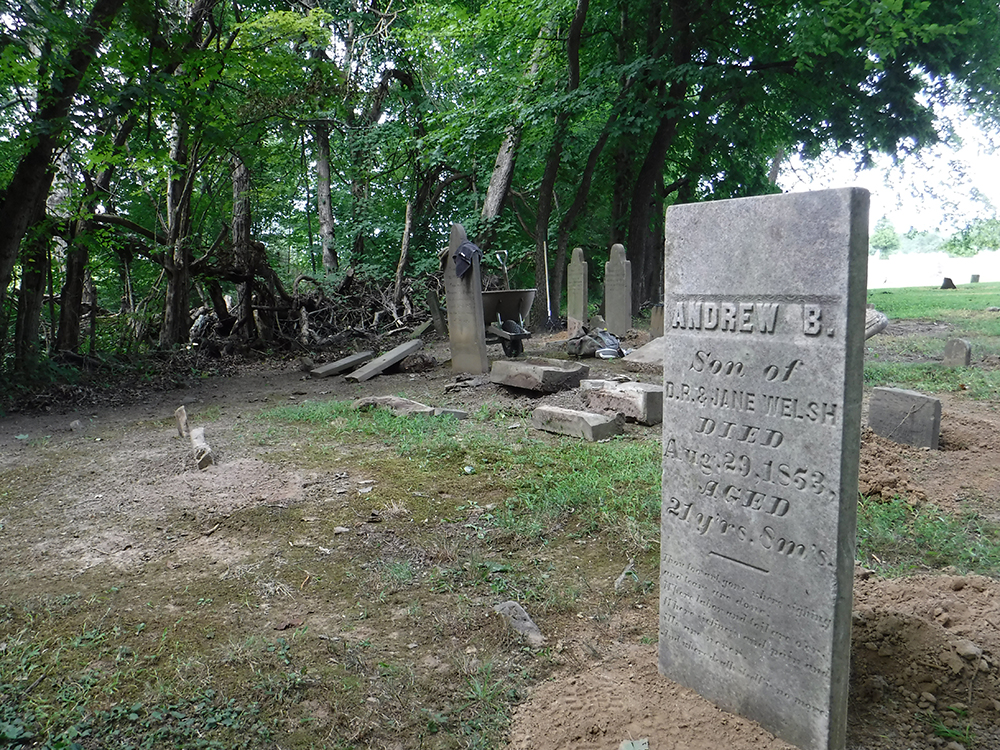
RECOMMENDED EQUIPMENT
Shovels…Tarp…Small digging tools…2 X 4’s for tamping…Levels or post level…1 Ton Hoist…Tripod or gantry system…Nylon straps…Work gloves…Safety glasses…Extra misc. wooden blocks…Gravel…Sand…
January 3, 2017 – CEMETERY CONSERVATORS FOR UNITED STANDARDS
Don't Use Concrete
Now that we have walked you through the “do no harm” methods for tablet setting that are age old and still used in our national military cemeteries, we will explain the harmful methods some have used in their stead.

Don’t Use Concrete – why concrete is a bad thing. I’ve often said that concrete in a cemetery should only have two purposes. One…to form pads for grave markers and monuments that have some type of base. And two…for recasting new slotted bases to replace originals that can’t be repaired. I exclude grave markers originally made from concrete. They are another issue entirely. I stand by this firmly because I’ve seen the damage done by countless tons of concrete poured and unwittingly placed in almost every cemetery I’ve been in. Concrete as a fix SOLVES NOTHING. Quite simply…if the original marker did not require concrete to begin with, don’t make concrete part of its restoration. But sadly this is often the first item so many people reach for in the hopes of making something permanent or more long-lasting. The results are always the same. The softer grave marker is now permanently encased in a harder substance. It is generally face up to all the elements and wears much faster. Freeze and thaw cycles will crack and break the stone. And it is still going to sink into the ground. So really nothing has been solved with this method.
This destructive practice has been going on for the better part of the 20th century to the present. It seems to have been very prevalent in the 1950’s and 60’s as some sort of cemetery cleanup method. As a result many tombstones and monuments have paid the price. We can’t undo what has happened in the past before better preservation techniques came along. But we can learn from this and discontinue it today.

This white marble govt. issue military marker is a prime example for not using concrete. Judging from the greenish/brown line that runs through, “CO.E” on the stone. I would say it sank to within a few inches from its top. This happens quite often and is usually caused by the settling of the grave. Or it could be due to things specific to the typography of the cemetery grounds. The natural fact of things is, that the earth is ever changing and will always move and change the grounds surface. So placing this marker in concrete won’t change that at all. What it has served to do, is to put a soft marble stone in direct contact with a much harder material by placing it into wet concrete.
People seem to think this sort of concrete collar will steady the stone and prevent wobble and lean. Not so at all. It will now just act like a fence post with a weight around its neck.
These are govt. issue military markers at a national military cemetery. Some are being reset and others are being replaced. Notice all the different sizes in width and height? They range from just over 3 ft. to over 4 ft. in height. These are also known as a, “tablet set” type of marker or tombstone. They are set directly into the ground like a fence post. You can see a great video on this under BASIC STANDARDS…Tablet Set. I can assure you, they are not using any concrete here.
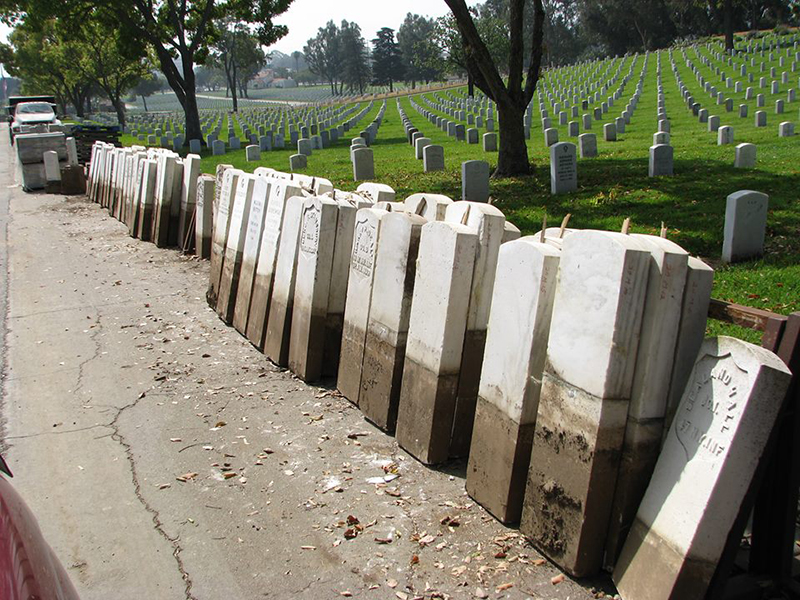

Here is another bad use of concrete. The long sidewalk pad approach. This is generally done through the quick easy clean up to mow faster method. When this occurs, most likely no real effort was made to probe for, locate, repair, or reconstruct the cemetery. This is always a sad fate for these artifacts and their now lost priceless information.
This is another sad concrete display. Although the stones are on an angle and not totally flat, they will still weather badly. Sadder still is that 5 of the 6 stones look to be intact with legible writing. Wouldn’t it have been a lot easier and less costly to have simply reset them? One can only imagine the time, effort, and money it took to build such a megalithic sort of monument like this. And it’s all damaging to the thing it was intended for.
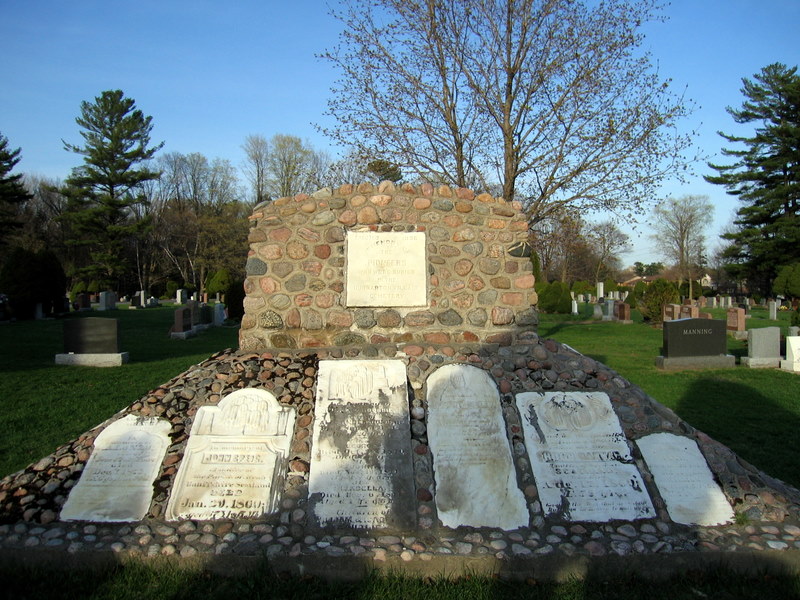
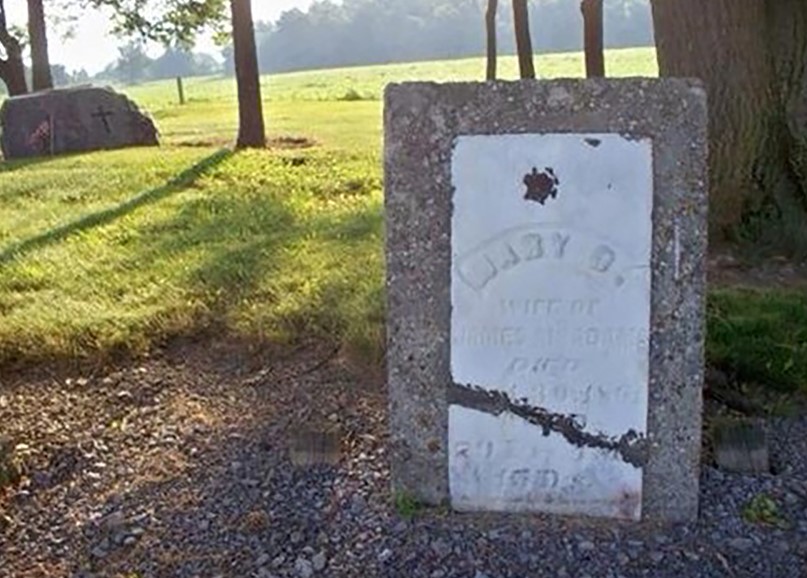

Concrete encasement seems to be another popular method to fix simple breaks. This is using an elephant gun to shoot a mouse. And sadly both tombstones appear to be simple single tablet breaks. The stone on the right even has its bottom piece intact and still protruding out of the ground. Now it can’t be mated to that piece, making that part no longer relevant to this situation. And judging from the rather short length of the rectangular encasement, I doubt it is tall enough to set properly. So on this one, your guess is as good as mine as to the final disposition of this repair.
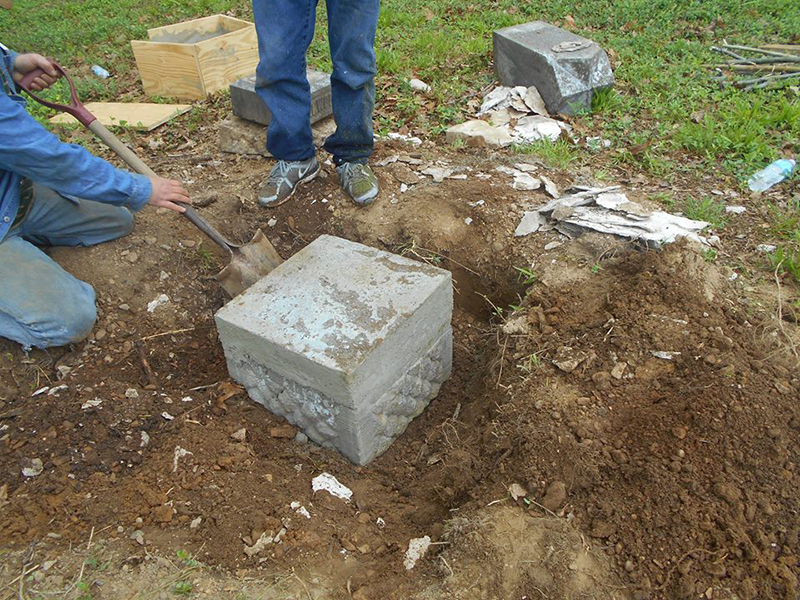

When I inquired of these two gentlemen the reason for this wet molded concrete block addition. They said it was added because the stone wasn’t level. I told them that I understand this and deal with this sort of thing all the time. I then explained this is simply a matter of raising and leveling the stone. And added because of the carved design clearly visible on the sides, this base block was meant to be seen and not buried. They quickly barked back exclaiming, “we just don’t have the time to do it right.” No time to do it right? I wonder how much time, money, and effort was put into hauling concrete and water to this remote site and then mixing and forming this unneeded piece of damage?

Here is an example of why tombstones, and in this case, their pieces should not be permanently fixed. CCUS member Scott Andersen has been restoring a cemetery in his hometown for the last 3 years. He and his dedicated group have worked with many jigsaw puzzles and tombstone pieces so far. But sadly some years back, before they started their work. A stone wall was created and many of the tombstone pieces were forever locked into this wall. In the picture you can see they found the mate to one of the pieces in the wall. Again, this happened some years back and the damage is done. The point here is to not repeat these same damaging mistakes.
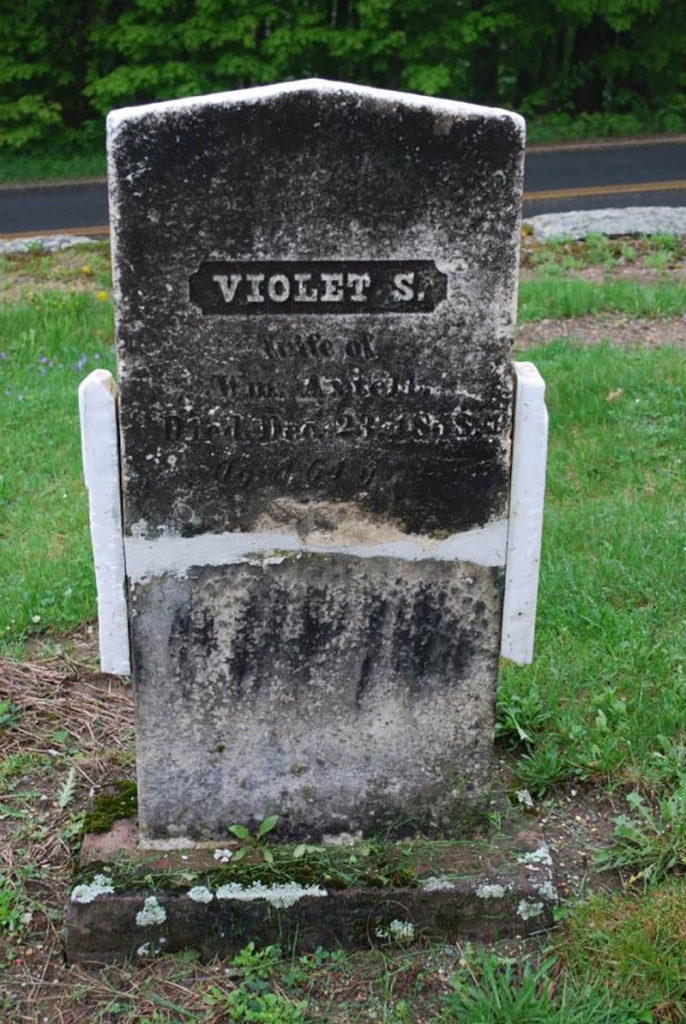
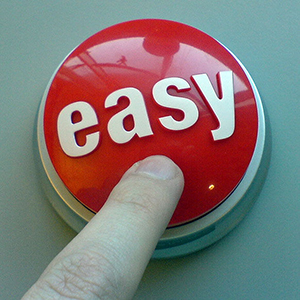
There are no easy button solutions to cemetery preservation through the means of concrete.
We would also like to add to this by saying, all hope is not lost. The situation just becomes much more precarious and involved, and will require the intervention of a more skilled professional. It literally takes hours to remove the concrete encasement. Often requiring a diamond blade to remove the concrete to within a ¼ inch of the tablet. Chisels & special dremel tools are also employed. And it still takes hours of painstaking careful work. Time must be taken so as not to not damage the edges of the tablet. And with some luck, maybe those who used the concrete mixed it poorly and applied it to a dirty surface, in turn making for a poor bond. This sort of restoration should always be handled by a professional or an individual who has first take a class in the basics and moved on to more advanced training.


For further information please read our document in ARCHIVES…CONCRETE – A Bad Solution. And watch the video below on this subject. This video completely explains this subject.
Other areas of interest that pertain to tablet setting
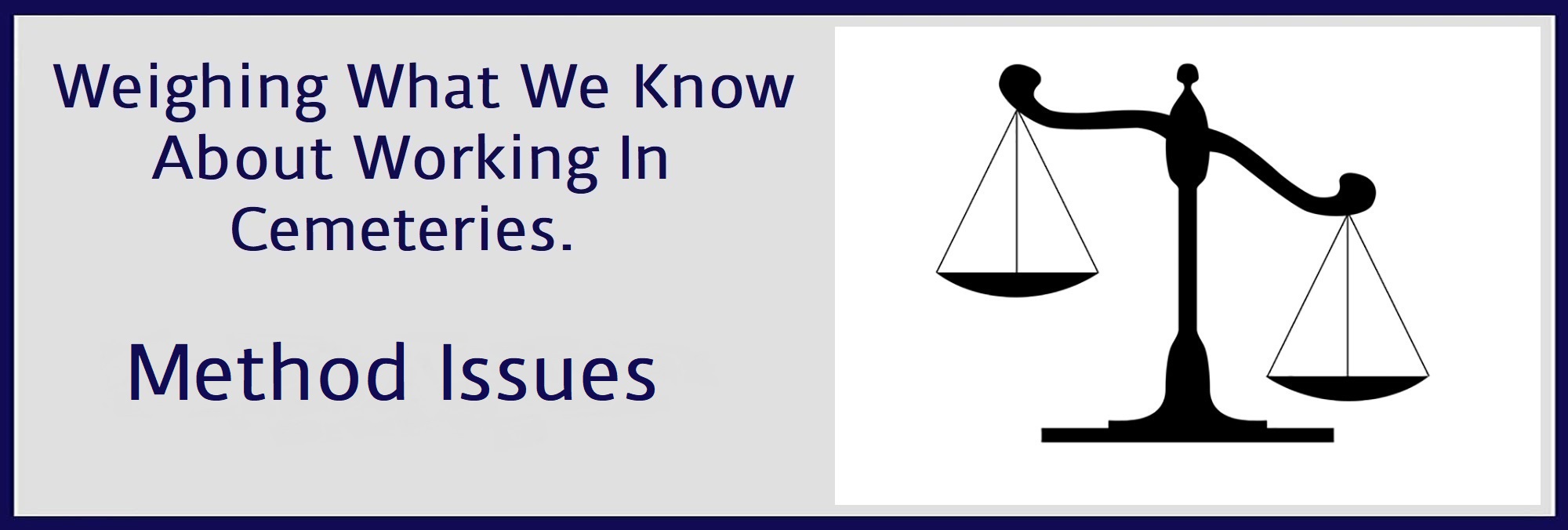
For more discussions that may have a bearing on tablet setting methods, mouse over PRO VS CON and choose The Field In General and Method Issues. You may also find the other categories under PRO VS CON helpful as well.
This section is here to weigh out the many “Pros VS Cons” that seem to exist in this relatively young field known as the cemetery preservation and restoration. A young field born out of the need and want to maintain the memorials left us in cemeteries. Maintaining things from the past has been around almost as long as the past itself. Art, documents, books, buildings, and now cemeteries. After the desire to save these things is met, then begins the how to save them, through what means and with which forms of maintenance. This quickly becomes a much clouded issue for many. We hope to lift this fog with some simple fact based thoughts and principals. Our cornerstone or main pillar for doing this will be a thing called, “Do No Harm”.
This section has two main goals. One is to lay out and examine the field itself and all of its controversial issues, problems, and divisions. The second main goal of this section is to lay out the said issues involving methods, techniques, and products, and run them through the list of 6 or more questions below. This is where you find the meat of the discussion before it is weighed out with these questions.
We are addressing as many of these issues as we can at this time with the following subcategories in this section. “The Field In General” subcategory addresses the overall methodology of the field itself. Other subcategories such as Cleaning and Bonding Agents, and others to be added, will address more specific methods and products.
These are the 6 standard questions we will ask of all methods, techniques, and products suggested or discussed on The Cemetery Conservators For United Standards website. Additional questions may be asked pertaining to a given subject depending on the need to ask them based on the subject. You will find the completed version per product and/or method under SOURCES…Pro VS Con Results.
1…MSDS… based on the MSDS recommendations. (Scale of 1 to 10) 1 being the most invasive or highest risk to a person’s health & safety. And 10 being the least invasive or lowest risk to a person’s health & safety.
2…Testing…has it been tested? (Scale of 1 to 10) 1 being the lowest # of testing done. And 10 being highest # of testing performed.
3…Longevity & Performance… based on reliable reports concerning how long & well the product holds up. (Scale of 1 to 10) 1 being the shortest longevity & lowest performance. And 10 being the most longevity & best performance.
4…Track Record & Wide Spread Use…How well has this substance or product in this technique held up over the years & how many places has it been used? (Scale of 1 to 10) 1 being the worst track record, least widely used, & least places used. And 10 being best track record, most wide spread use, & most places used.
5…Permanence…is the substance or product in this technique, reversible or nonreversible? (Scale of 1 to 10) 1 being the lowest possibility of reversal. And10 being the highest possibility of reversal.
6…Cost & Training…how expensive is the product & is there specified training required & what is its cost? (Scale of 1 to 10) 1 being highest cost & most training. And 10 being lowest cost & least training.
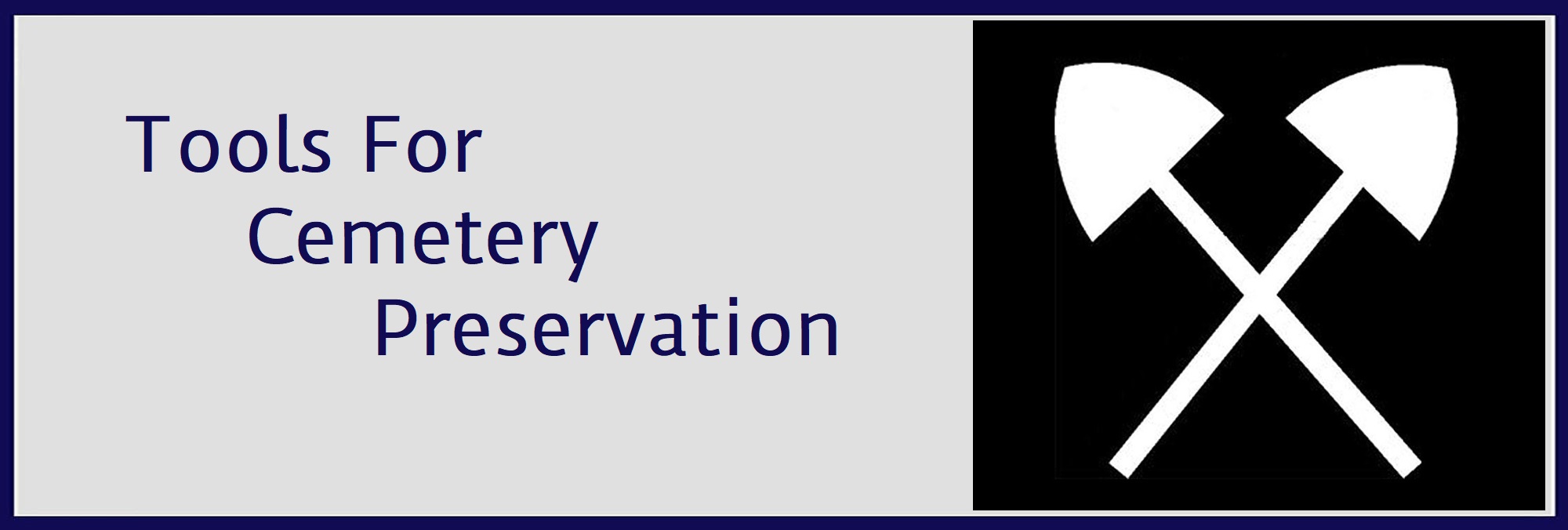
TOOLS & SUPPLIES…things we suggest to better aid in your cemetery preservation work can be found here.

TECHNICAL…is the place where we house all information for products used and has Product Explanations, Product Information Sheets, and MSDS
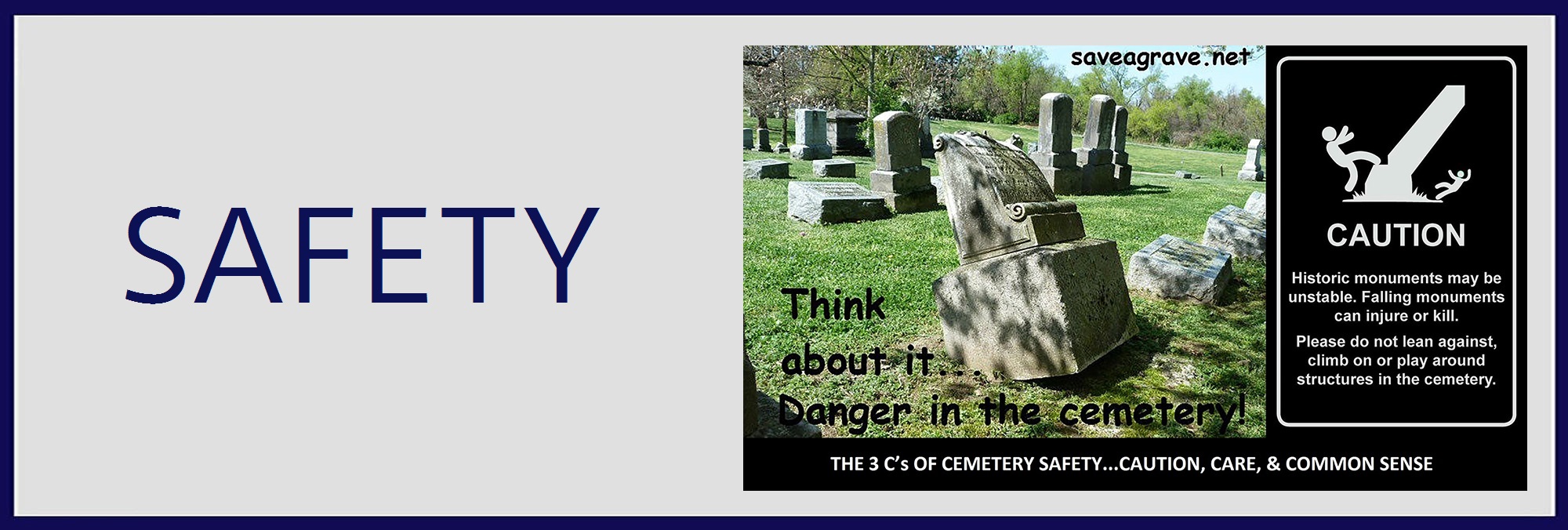
SAFETY…is always an important place you should visit at every step along the way
SAFETY – a place for all safety related issues found in cemeteries and in the preservation of cemeteries. Every year people are killed due to unstable stonework in our cemeteries. Over time many of these monuments begin to lean and teeter. And unsuspecting visitors are crushed because they disturbed one of these loose monuments. We wish to remind people of this situation and caution them from such tragedies. Safety is also equally important for those who choose to do some sort of restoration work. The hazards can range from a pinched finger to being killed by a large stone. I can say all of our members take safety very seriously and make it our constant number one priority in everything we do. We please ask that you do the same. This section will try to address this issue as much as possible. Let’s all be safe out there in all that we do.
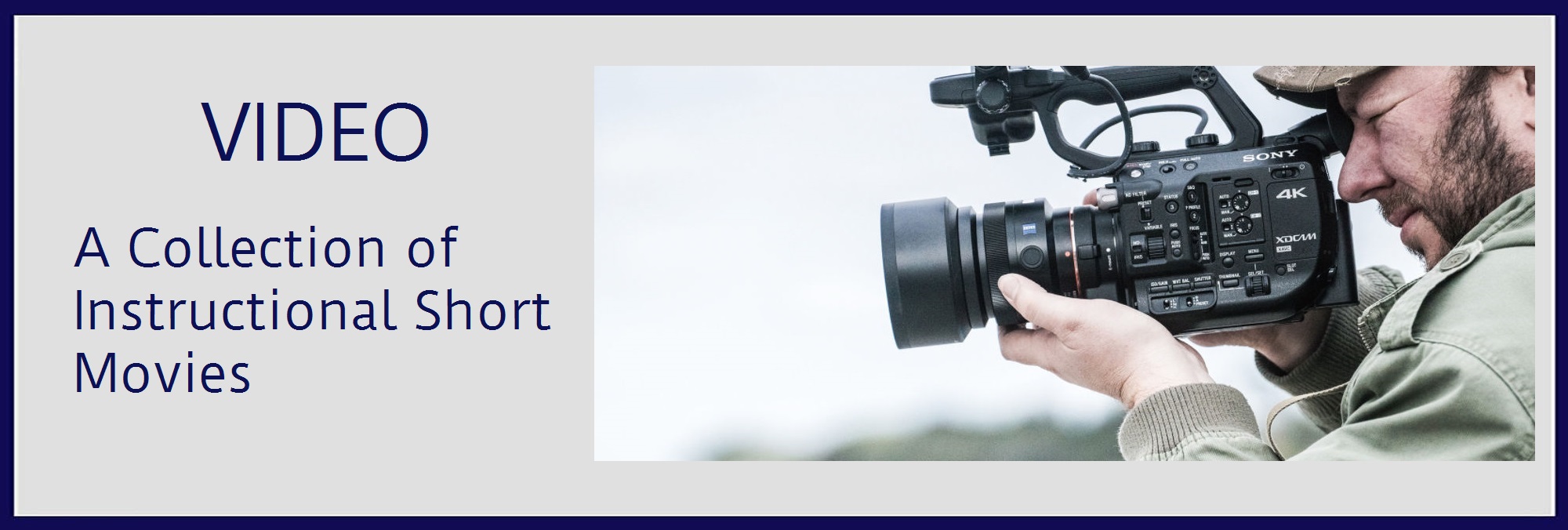
This is where you will find the latest video links to cemetery preservation and restoration. There are many great videos from both professional organization and CCUS members. We will constantly add new media as it becomes available. Mouse over VIDEO and choose an area of interest. You will find one of the six areas below to view.
Cleaning – the best ways to clean with no harm.
Hoist Work – lifting stones with a hoist type system.
Repair Work – putting the broken pieces back together again.
General Field Work – a collection of misc. preservation work.
Good Preservation – what good preservation looks like.
Bad Preservation – what bad preservation looks like.
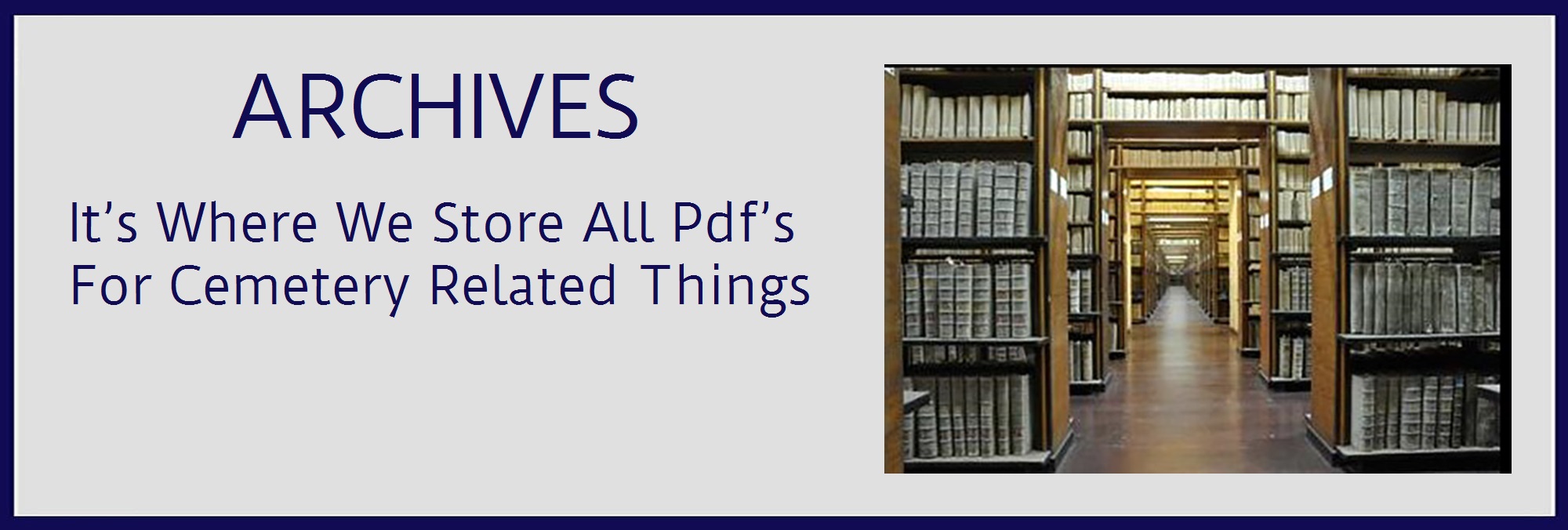
ARCHIVES…is where we house downloadable pdf’s and FREE cemetery preservation related images for you to use. We have jam packed this ever expanding library with pdf’s on important cemetery related issues. We wanted you to have a place where you could easily view, print, or download important information. We encourage you to share it with other individuals or groups you may know that are interested. There is no such thing as too much cemetery awareness.